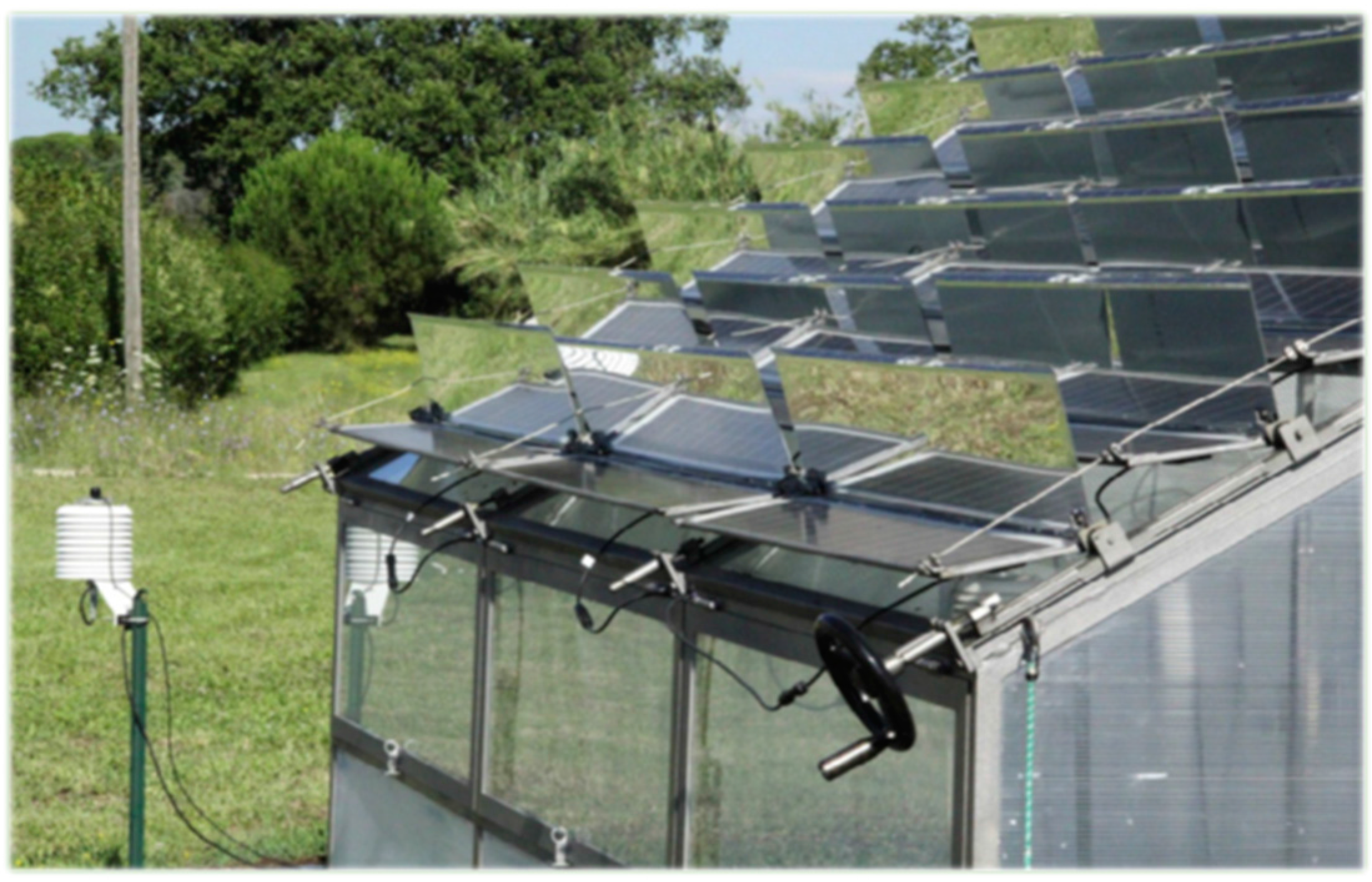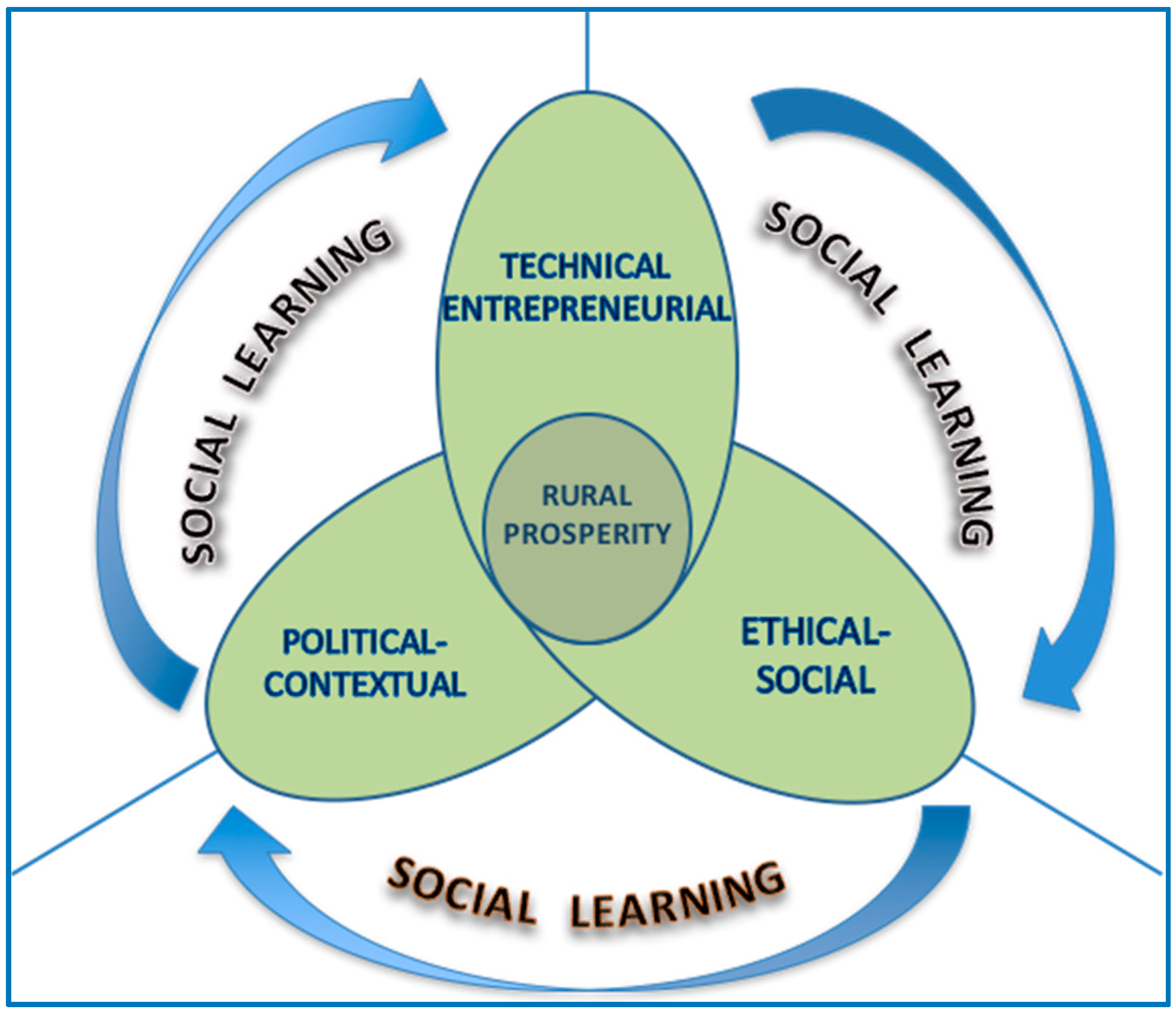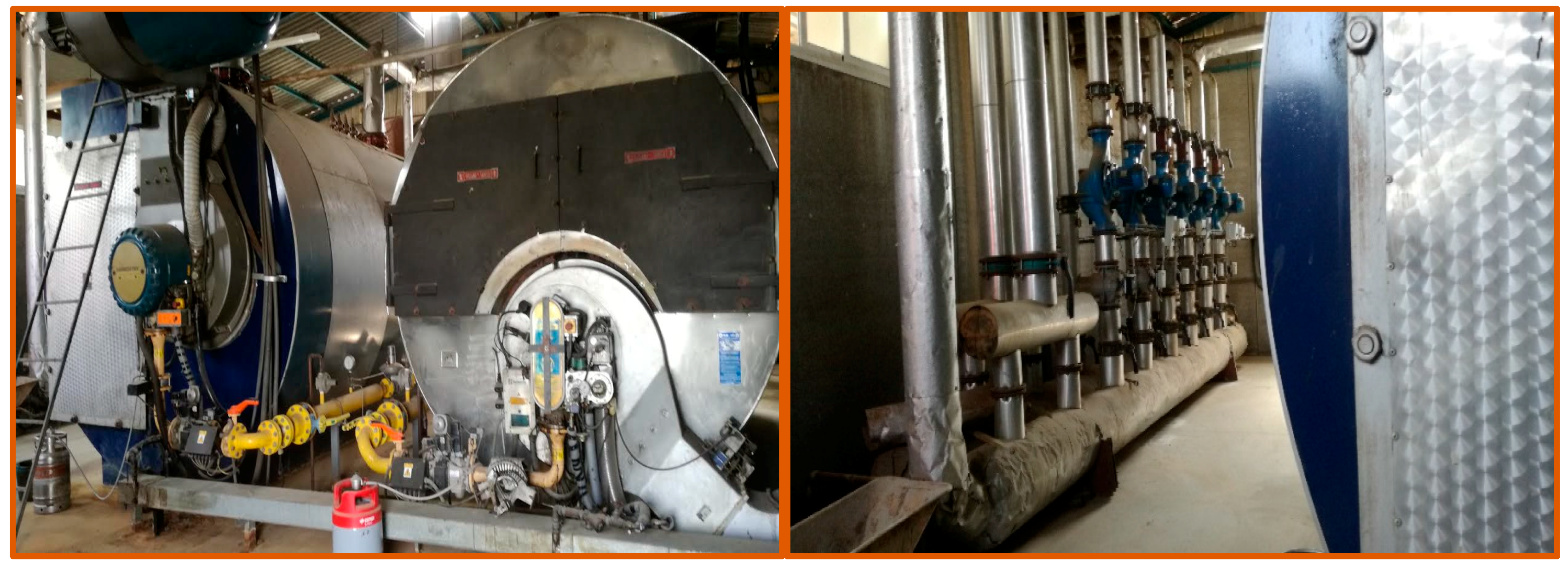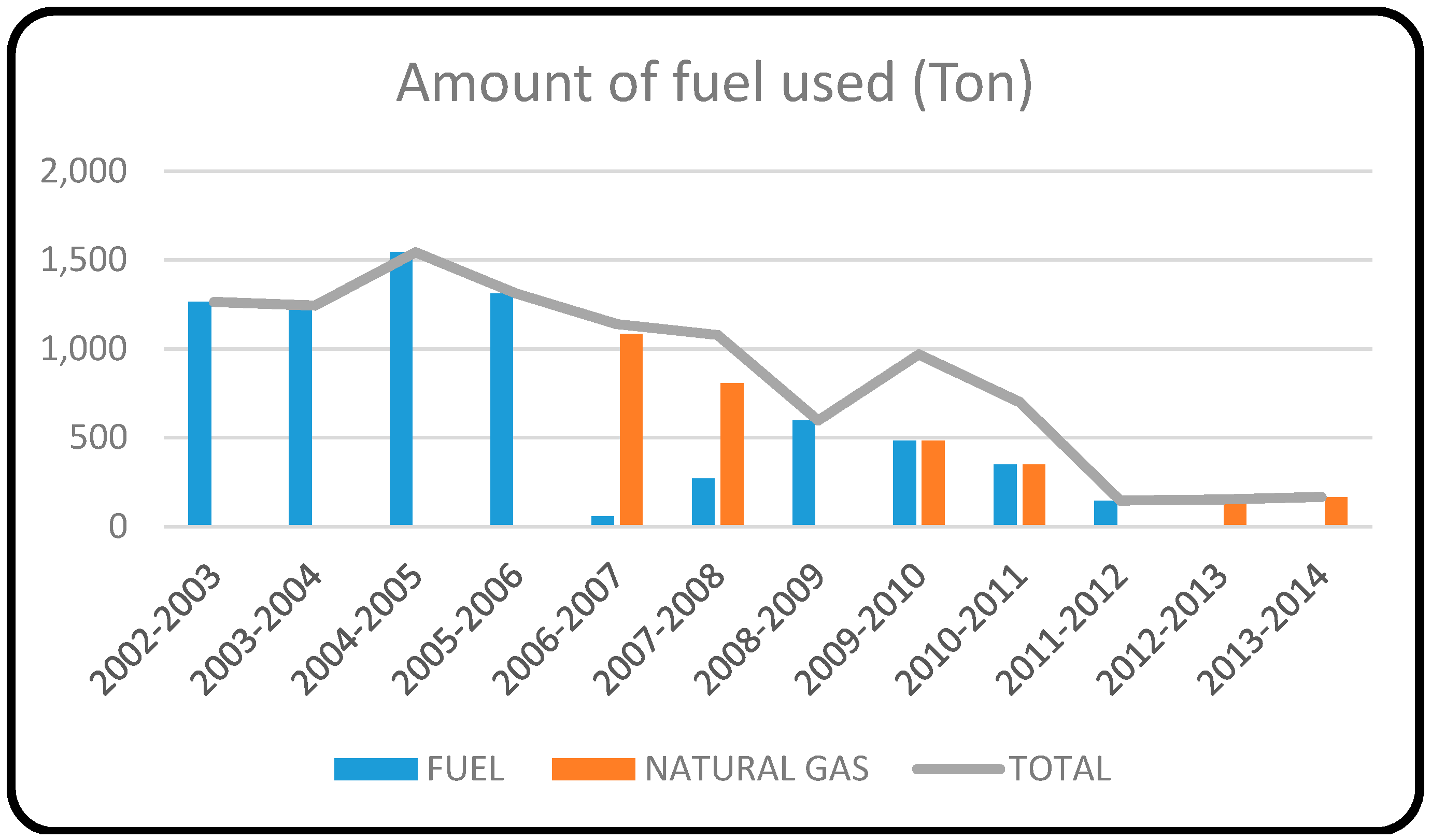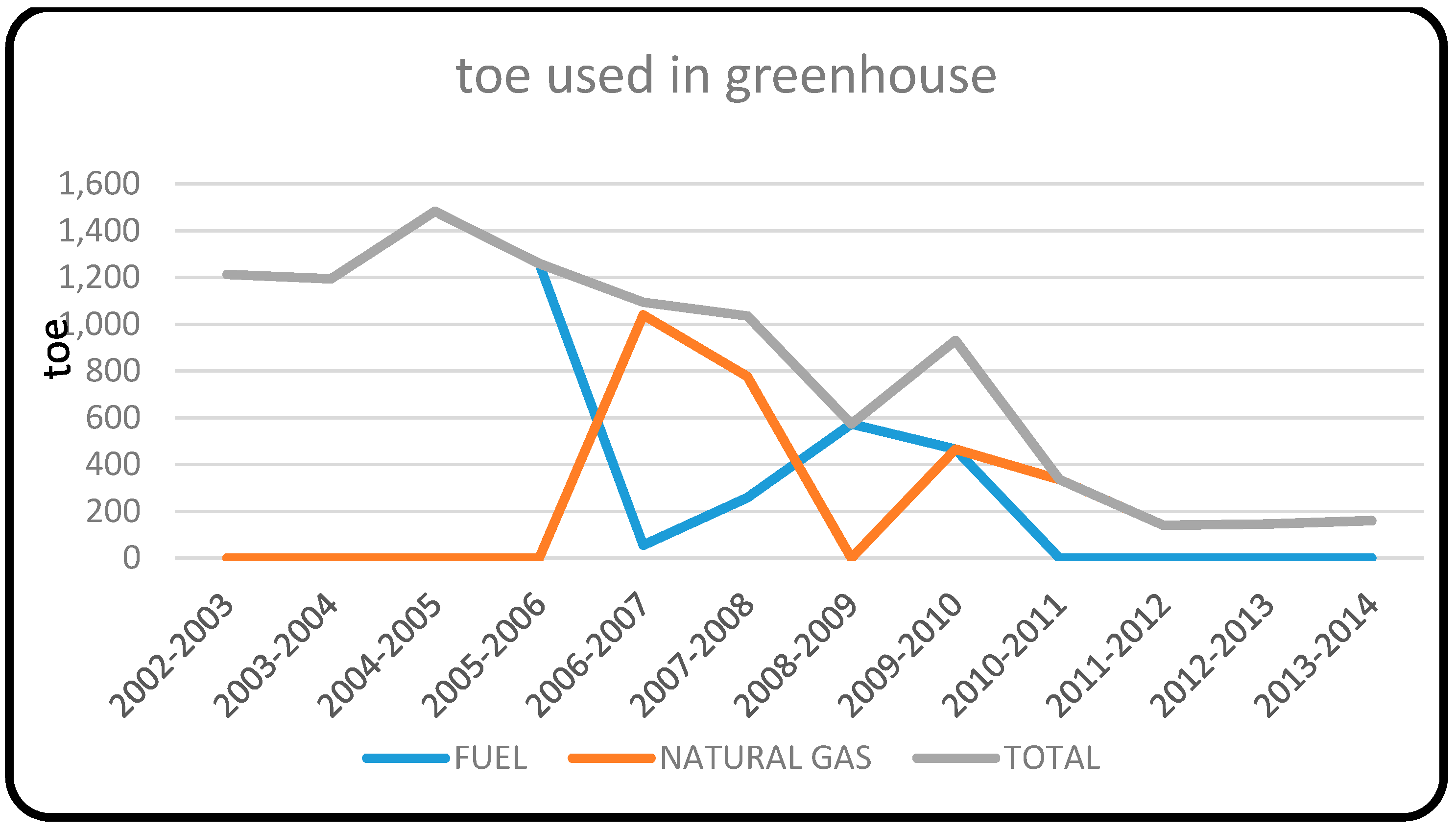1. Introduction
In the overall European context of setting the economy on a sustainable growth path, businesses and rural communities must adapt their systems to find alternatives to our fossil-based economies. This can be achieved by unlocking the potentials of the bio-resources available in the different bio economy and blue-economy sectors, in a sustainable way that is accepted by the citizens. At the same time, Europe must continue to address resource efficiency in light of the increasing pressure on global food systems to meet demand from population and income growth. Society has to turn these challenges into real actions, bringing together the nexus among the primary sector, nutrition and health, and the nexus among food, water and energy [
1]. Many of the challenges are of a global nature, requiring global solutions, working with people in cooperation with different partners. Innovative approaches to knowledge exchange such as those foreseen in the European Innovation Partnership “Agricultural Productivity and Sustainability” are of utmost importance to foster the implementation of solutions.
The Political Guidelines for the next European Commission for the 2016–2017 [
2] programming period focus on resilient value chains for food and bio-based products, better managing possible future shortages in food and energy, fostering rural innovation with broad societal engagement. In addition, cross-cutting issues such as soil management and energy use efficiency will be taken into account in the EU policies.
Various studies highlight the energy problem within food systems. Firstly, energy is a basic consumable which is used more and more [
3] in the production, processing and manufacture of food, with a heavy dependency on fossil fuels [
4]. The use of these fuels in modern food production systems continues to increase at an international level [
5] leading to a growing number of environmental and social impacts [
6]. These production systems rely heavily on fossil fuels, contributing to an annual increase in greenhouse gases (GHG) [
7] and the increased use of non-renewable energy [
8]. As stated by Fischer et al. [
9], energy usage increases with the intensification of agriculture, caused by anthropogenic pressures and the increasing demand for food [
10]. Studies carried out by the European Union show that the energy consumed in agricultural production increased between 1989 and 2009, reflecting a lack of efficiency in terms of energy usage [
11]. In addition, international policies highlight the use of energy in food systems as a food security problem [
12]. Despite this, the efforts of those organizations which are responsible for meeting food demand at a global level [
13] have been accompanied by an increase in the production of basic products, primarily in terms of medium scale agricultural exploitation. According to the Food and Agriculture Organization of the United Nations (FAO) [
14], it is estimated that 80% of this increase in agricultural production will be as a result of intensified production systems. In addition, new agricultural technologies have emerged which combine increased production with improved environmental protection.
Food production systems and the limitations of energy resources represent a complex dichotomy: ecological agriculture (EA) seems to be an option, with continuous growth at an international level [
15] offering different consumables to those used in conventional agriculture (CA). Some studies show an increase in energy efficiency within ecological production [
16] as a result of using consumables with low non-renewable energy consumption, in response to the restrictions and increases in prices of basic fuels [
17]. On the other hand, other studies show significant differences with regards to the efficient use of energy between ecological production and CA [
18]. Sustainable agriculture uses energy from fossil fuels in a more efficient way than agricultural production systems; greater energy efficiency in crop rotation under organic management was attributed to the fact that the forage component was less sensitive to chemical input removal than grain crops [
19]. Different studies consider that energy use can be reduced by up to 50% in organic crops compared to traditional ones [
20,
21]. Greater energy efficiency has been observed with organic crops due to the elimination of chemical inputs and changes to agricultural tasks [
6]. However, the growth of the ecological production system is a result of market demand for healthy foods, with consumers and producers being aware of the need for a less contaminated environment, and less use of fossil fuels and more efficient use of energy [
22].
Energy efficiency involves a reduction in the quantity of energy required to produce various food products [
23]. In 2006, a study coordinated by Cornell University on the “impacts of organic farming on the efficiency of energy use in agriculture” [
24], showed that organic farming systems significantly reduce the fossil energy inputs in production and also improve several aspects of agriculture’s environmental performance compared with conventional farming systems. The findings of this study were: improved fossil fuel inputs (30% reduction) compared to conventional production, no use of commercial nitrogen or pesticides in organic systems, less soil erosion, improved water resources and increased organic material in the organic system (up to 50%), greater acquisition of solar energy, and less requirement for fossil fuel (up to 50%). Following the review of information from approximately 50 studies, Belloti [
25] states that the majority of organic production systems are more energy efficient than their conventional equivalents. An alternative that has been developed is the application of conservation or regeneration agriculture methods [
25,
26,
27]. Certain studies have shown that using these methods can ensure an efficient use of energy [
28], helping to regenerate the soil and increasing organic material, improving its fertility and crop productivity [
29].
Food production requires new low-consumption energy technologies [
30]. In order to adopt these energy innovations, technological changes are required, along with a change of vision amongst the receivers to facilitate the implementation of new practices that are more energy efficient [
31]. The farmers who have adopted these practices in the most energy efficient way (conservation work, and reducing fuel use) have a mentality and experience which allows them to tackle challenges and unforeseen changes in their surroundings [
32,
33], which contributes to the promotion of innovation and sustainable development [
34,
35]. These experiences amongst farmers with a vision for sustainability apply innovative agricultural practices in order to preserve natural resources, finding synergies between natural, socioeconomic and energy flow systems [
36].
Figure 1 shows the group of farmers’ evolution since the 1970s up to the present day. The experience and learning both within and outside of their field of work (such as their IPMA project management certification and forming part of the European “Food for Life” Platform) has enabled them to create strategies to move away from traditional methods towards innovative activity with a sustainable vision. The farmers’ industry experience over the last 30 years has led to energy savings and a more efficient use of the natural resources available to them in their production activity [
37].
The reason behind farmers’ tendency towards more sustainable production models, with regards to energy consumption, is the impact it has on the profitability of farming activity [
39]. Innovation in conservation agriculture practices facilitates an efficient use of fuels, in the face of reduced availability of “cheap” fossil fuels [
40] (increase in the price of fuels). Some studies show the importance of farmers understanding the comprehensive use of fossil fuels [
41] in production systems, due to the fact that each type of crop creates different energy needs [
42]. This local, proven experience [
43] amongst farmers with regards to the use of fossil fuels makes innovations and strategies for reducing energy resources in different agricultural scenarios more feasible [
20]. The use of farming machinery is indispensable in agricultural work. However, it is possible to reduce its use and reduce the cost of fossil fuels [
20,
40]. In certain studies, it is evident that organic producers are shown to make more efficient use of energy by applying sustainable production methods [
44], with production relying on finite energy consumables. In these ecological systems, the use of fossil fuels is substituted by a greater use of human energy, resulting in a greater diversity of tasks [
23]. Conversion to organic farming systems will reduce farmers’ dependence on energy; and Organic farming can increase the efficiency of energy use per unit of production [
24]. This change is accepted by many farmers requiring greater specialization (
Figure 2).As stated by Wood et al. [
26], the practice of EA reduces the use of energy involved in the production of food, stimulating the metabolism of the soil, water and wind system (the elimination of chemical products, incorporation of crop remains and livestock activity within the soil, increases organic matter, reduces soil, water contamination and reduces greenhouse gas emissions). As well as reducing energy usage, EA also improves the soil’s fertility, which contributes to an improvement in the surrounding environment [
45]. The integration of organized groups facilitates social learning for innovation based on various strategies for the sustainability and implementation of conservation tasks in EA [
43,
46,
47,
48,
49,
50]. These social learning processes have led to a change in mentality amongst farmers with a sustainability vision [
46,
51,
52], favoring feedback and creating knowledge amongst the organized groups’ participants.
In Spain, in the Murcia region, social learning processes amongst ecological farmers with greenhouses are of particular note [
46,
48,
53]. This ecological production in greenhouses is also regulated by various rules at an international level [
54,
55,
56], although there is not enough information regarding the environmental impacts and the efficient use of energy [
57,
58].
It is well known that fruit and vegetable production in greenhouses is one of the systems that consumes the most energy in the agricultural sector, with production increasing based on energy inputs [
58]. The basic point of the greenhouse is to understand the quantity of energy that is required in order to meet the caloric needs of each of the crops. The high costs and availability of energy [
59], restrict the use of heating [
60], making it more important for farmers to make efficient use of energy in the greenhouses. It is because of this that the comprehensive operation of this production system requires skilled personnel [
61] in order to make efficient use of the consumables used. The training of greenhouse operatives is fundamental, especially with regards to their knowledge on crops’ energy requirements and managing ecological greenhouses. In addition, Sun [
62] mentions that the adequate design of the greenhouse (the material used, type of netting, color and thickness), the lighting, water circulation systems, solar energy storage and use as geothermal energy all influence energy efficiency and can make the system more profitable. The management of lighting is another key factor for making efficient use of energy in greenhouses, with light emitting diode (LED) technology enabling a significant reduction in energy [
63].
Some greenhouse farmers have been able to increase the profitability of the system as a result of more efficient energy usage [
64]. This increased profitability from greenhouses has not only been achieved through the use of fossil fuels, but also through other renewable energies, such as solar energy from mobile panels (
Figure 3) [
65].
This type of system, the option of using renewable energy enables a reduction in the use of fossil fuels and improves farmers’ incomes [
65]. Other strategic decisions for transitioning from conventional systems [
66] to innovative systems have focused on the use of farming and forestry waste as sources of bioenergy [
67,
68].
Based on a vision of modernizing agriculture for sustainability, this article analyzes the dynamics of an Agricultural Society through a social learning process of 25 years of experience with EA and the efficient use of energy and finite resources [
1]. The importance of the study is to show how organic farming can reduce and rationalize the use of fossil fuels in the ecological system. The article focuses on the use of fossil fuels in the operation of ecological greenhouses in the Region of Murcia, Spain. The analysis is carried out through several dimensions, political-contextual, technical-entrepreneurial and ethical-social, which impact the sustainable management of these non-renewable resources [
47,
49].
The article is structured as follows:
Section 2 describes the methodology used for carrying out the work as part of the European Rethink Project.
Section 3 presents the results and a discussion of these, demonstrating the strategies implemented by an organic cooperative with more than 30 years of experience in Spain. The results are divided into three subsections based on the WWP methodology used. Finally,
Section 4 presents a conclusion, limitations and some recommendations.
4. Conclusions
The Organic Cooperative is an organization dedicated to the production of ecological fruit and vegetable crops. Following its change in production activity, from CA to EA, it has created innovative tools which have enabled it to be efficient in the use of fuels, reduce the use of energy from fossil fuels and contribute to environmental improvements. Based on a social learning process, across more than 30 years of experience, there has been a change from a conventional production system to an ecological one, which has not only impacted farmers’ financial benefits, but presumably also has positive environmental effects as a result of using less fuel and agricultural supplies.
The factors in the ethical-social dimension have influenced the outcomes of the company’s vast transformation. The conduct of individuals within the Organic Cooperative means that their skills and abilities are improved, creating total confidence and teamwork, with ethics and values being fundamental aspects. The activities within this dimension have led to a complete acceptance of the use of ecological production systems. This change led to the implementation of new agricultural tasks (conservation and regeneration of natural resources) and a more rational use of fossil fuels. These are factors that the European Commission itself outlines as important ethical and social considerations, in particular in relation to agriculture and related food production [
88].
The regional and international strategic vision, influenced by the political-contextual dimension, enables it to specifically plan its activities and implement the necessary strategies in order to improve the management of natural resources. Based on this political-contextual dimension, the ecological cooperative commits to the EU’s objectives for reducing energy consumption [
11,
37,
66], and making more efficient use of energy by reducing the use of fossil fuels. Their production activities are clearly linked to the EU’s 20-20-20 strategy: use 20% renewable energy, reduce greenhouse gas emissions by 20% and improve energy efficiency by 20%.
The farmers’ competencies create strategies within the Organic Cooperative’s technical-entrepreneurial dimension. Technological change leads to modifications in the production systems in 100% of operations, as well as in all of the greenhouses. By moving towards ecological production, it enables it to access the main ecological product markets within the European Union. Ecological product export activity is its main source of income (it currently exports over 90% of its products). The importance of this change has been the wide acceptance of its ecological products offered, combined with the profitability from its efficient production process, with the withdrawal and efficient use of fossil fuels also being an important factor in its success.
Technological innovation creates experience and knowledge in terms of the efficient use of fossil fuels. Greenhouses are the production strategy that consumes the most energy within the agricultural system. Training farmers in new technology is the basis on which they are able to decide how much and which type of fuel to use in the greenhouses, making use of them in an efficient and profitable manner. The organic cooperative’s ecological greenhouses create products in greater volumes and with higher quality. Their products are used strategically as they are harvested out of season and can be taken to market before competitor products. The changes in the ecological system led to a more rational and efficient use of fuels. The organic cooperative’s ecological greenhouses have reduced the use of fossil fuels by more than 80% over 12 years. A clear success of the strategies adopted by the farmers in the Organic Cooperative is the reduced total operating costs (by 26%) as a result of transforming the conventional system to an ecological one in greenhouses.
The Organic Cooperative’s experience with regards to the ecological system and the use of greenhouses creates a new vision in the field of fossil fuel usage. The design used within EA, implementing crop conservation tasks contributes to the efficient use of energy required in the greenhouses. The experience of these farmers is a result of social integration. The group’s inclusive vision is a product of the social learning process and improved confidence in the decisions made.


